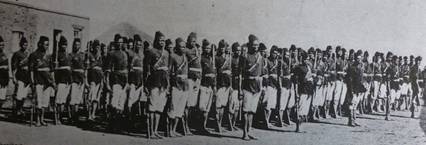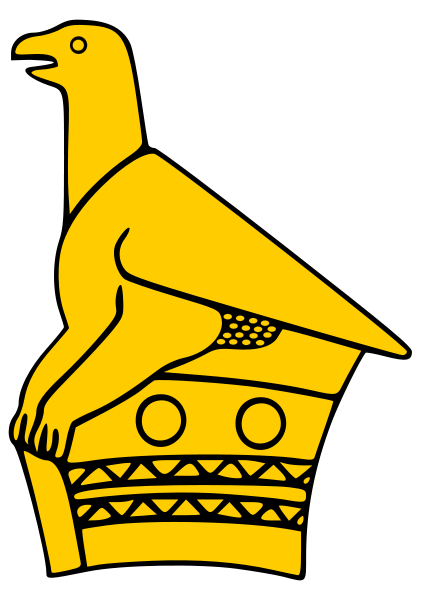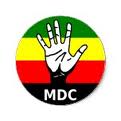The Kia
Pioneer Days
Were the Matabele just idly standing by?
Matabele strategy was a source of great confusion to their white contemporaries. Discussions in the British House of Commons (you can search for the full text online on their website) are typical of the limited understanding of the time. They found it difficult to believe that the Matabele, who in their eyes were “wretchedly armed,” without leaders and still crippled by the losses they sustained in 1893 were able to hold their own against the while soldiers. Gale (1958: 183) ably expresses Rhodesian opinion on Matabele strategy, claiming they “had no co-ordinated plan, largely because they had no supreme leader. Each induna acted on his own initiative, and there was no cohesion among them”. Yet, the Matabele and their allies were better armed, sporting modern repeating rifles and what's more, they knew how to use them with devastating effect. The whites were shocked that so many of the Native Police had "switched sides" and they were easily identifiable by their "white knickerbocker trousers" (Selous 1896: 78); the police used their weapons training and understanding of white tactics to devastating effect. More importantly, the indunas had learnt of the devastating effect of the machine guns (thanks to the battles of Egodade and Bonko) and were in no hurry to repeat their suicidal bravery by storming the laagers.

Native Police, 1896.
And the plan was?
After the initial flurry of killings and skirmishes, the Matabele seemed content to surround Bulawayo and the other laagers, always threatening but rarely attacking. In a clever tactical move, the Matabele leaders around Bulawayo waited for the whites to send patrols to them, then fight and withdraw. The general strategy seems to have been based on a policy of attrition, where they hoped to inflict as many casualties on the whites as possible, wearing down white forces until they could storm the town. Revealing broader aims, in the Belingwe area, Laing (1897: 36) was told by a prisoner that the plan was that "all the white men in Bulawayo were to be killed and also those at Inseza… I heard that the Impi was to kill all in Bulawayo first, and then on to Victoria". In the first three weeks of the war, the whites appeared to be content to fall in with Matabele plans. Many patrols were sent forth with little more intention than causing a fight and did more harm to the morale of the town than inflicting any defeats on the Matabele. Davis, editor of the Sketch, caustically commented in an April editorial that the tactics were equivalent to "sending out the main strength and leaving the player's own King in danger" and a week later bluntly stated "local skirmishes by means of patrols serve no purpose". Sauer (1937: 297-298) agreed, saying "These fights were quite useless, and led to no definite results,as the forces employed were too weak to push a success to a satisfactory conclusion".
So it wasn't one-sided then?
Cobbing (1976: 399) reports that the "respect that the Europeans were rapidly coming to have for the Ndebele increased with the first two major engagements of the war, those at Fonseca's Farm and on the Tuli Road in the early part of April". The Matabele nearly won the first one, surrounding Gifford's men in laager and pressing them hard until the whites were severely short of water, food and ammunition, grimly facing another "Wilson Patrol Disaster" in the face. They were only saved from total defeat by the arrival of a Relief Column from Bulawayo. The Tuli Road Patrol, consisting of 100 men under Captain Brand and van Niekerk, had sallied forth to look for anticipated reinforcements from Fort Tuli, on the Shashi River. They found little encouragement in the deserted road and began their return to Bulawayo and on April 10 were attacked by men under Mahlahleni Mafu and Mnyagavula Masuku at the south-eastern side of the Matobo Hills. A running fight ensued, until the whites made a stand on a low granite dwala which the Matabele promptly attacked. Giving evidence about the battles later, Lieutenant Webb commented on the "astounding audacity and bravery" of the Matabele warriors (Selous 1896: 123) and praised Captain van Niekerk for his cool handling of the six-hour battle that left six whites dead and estimated Matabele casualties at over 100. Immediately after this, Duncan halted all forays and Bulawayo was closed off for two weeks.
Sourced from the Zanj Financial Network 'Zfn', Harare, Zimbabwe, email briefing dated 28 March 2011



 South Devon Sound Radio
South Devon Sound Radio Museum of hp Calculators
Museum of hp Calculators Apollo Flight Journal
Apollo Flight Journal Apollo Lunar Surface Journal
Apollo Lunar Surface Journal Cloudy Nights Classic Telescopes
Cloudy Nights Classic Telescopes martini in the morning - The Lounge Sound
martini in the morning - The Lounge Sound The Savanna - Saffer Shops in London
The Savanna - Saffer Shops in London Linux Mint
Linux Mint
 Movement for Democratic Change
Movement for Democratic Change